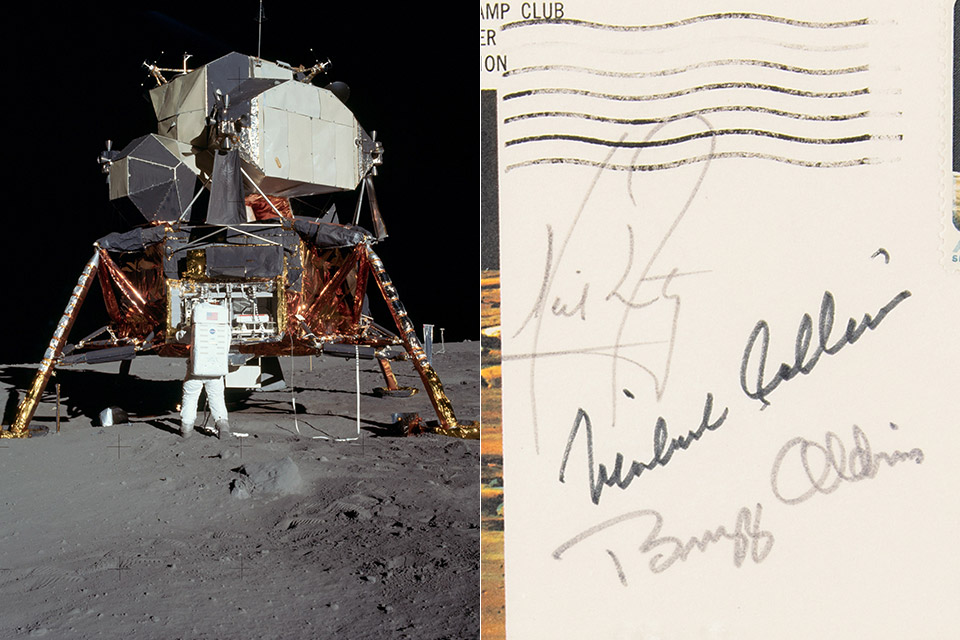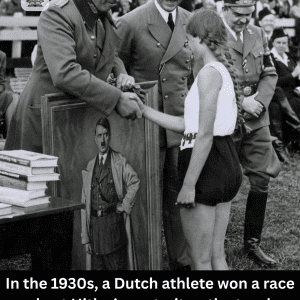In July of 1969, as Apollo 11 prepared to embark on the first manned mission to the Moon, three astronauts—Neil Armstrong, Buzz Aldrin, and Michael Collins knew they were risking everything. What the world saw was heroism, science, and exploration. But behind closed doors, those same astronauts were quietly confronting a harsh truth: if something went wrong, there would be no safety net for their families.
At the time, NASA didn’t provide life insurance for astronauts. No traditional insurance company would take the risk either. The mission was groundbreaking and extremely dangerous. Faced with this grim reality, the Apollo 11 crew devised an ingenious plan that mixed sentiment with practicality: they signed over 1,000 postal envelopes in hopes that, if they didn’t return, their autographs could be sold to help support their loved ones.
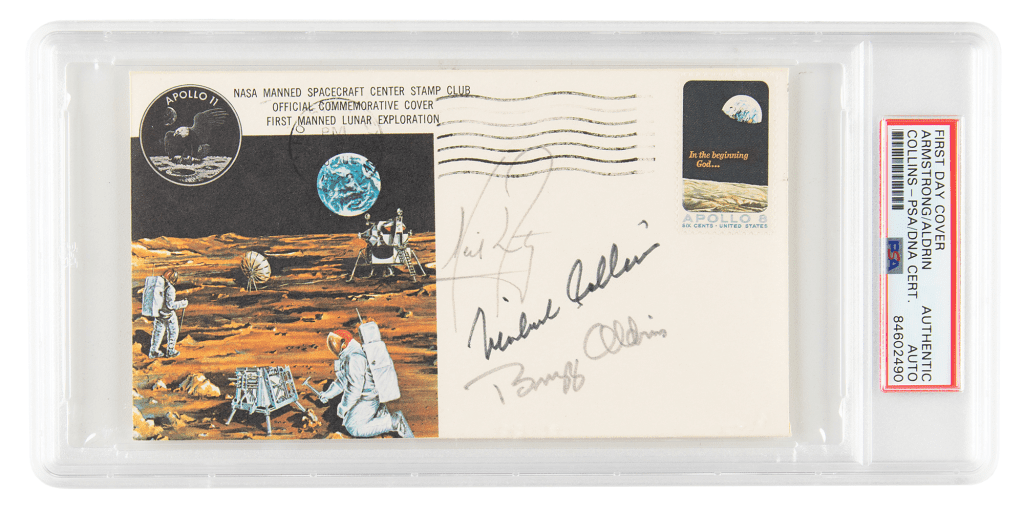
The Problem: No Insurance in Space
It’s easy to assume that astronauts would be heavily insured. After all, they were about to strap themselves to a Saturn V rocket and blast into the unknown. But in 1969, there were no established protocols or insurance products available for people traveling to space. The risks were too high, the outcome too uncertain.
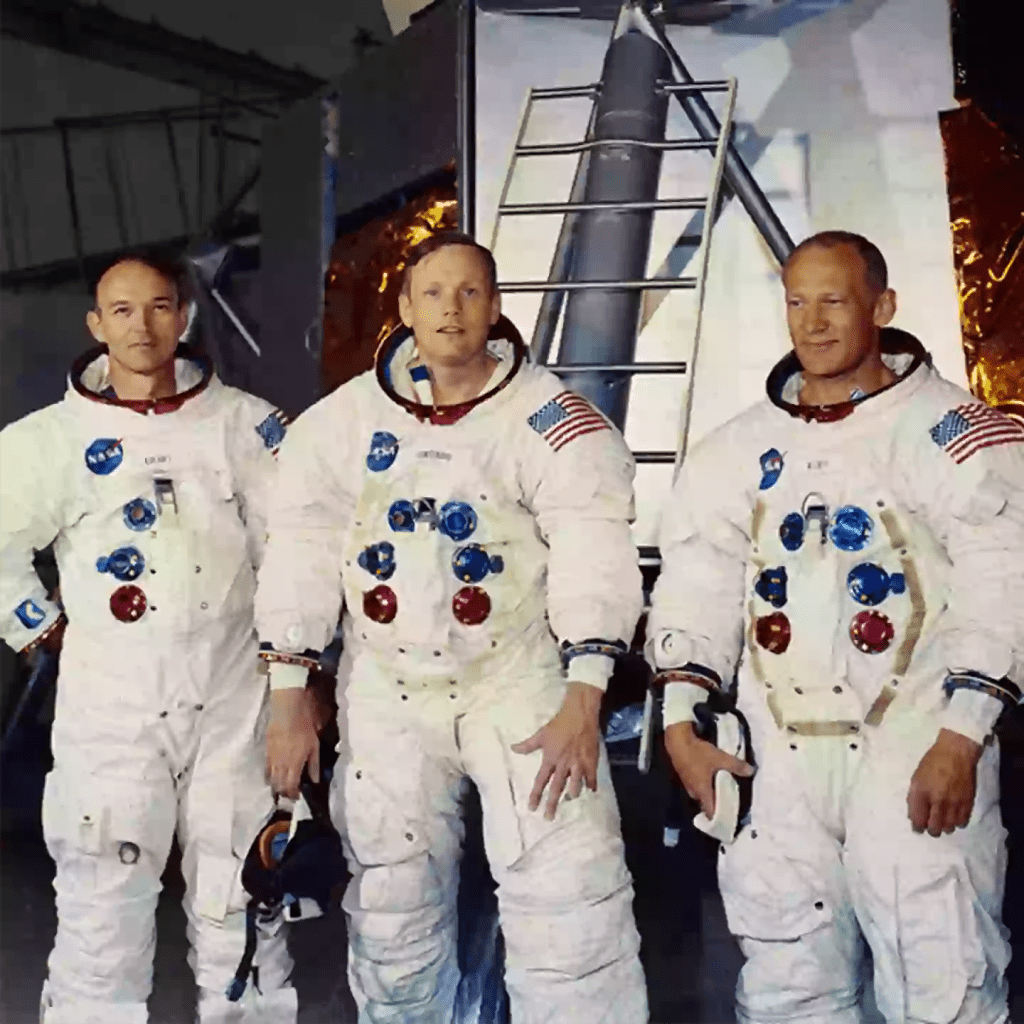
Neil Armstrong, Buzz Aldrin, and Michael Collins understood that their families could be left with nothing if they didn’t return. They had seen the tragic loss of the Apollo 1 crew just two years earlier. There was no room for blind optimism.
The Creative Solution: Autographs With a Purpose
To get around the lack of life insurance, the astronauts took a deeply human approach. They signed hundreds of commemorative postal envelopes, also known as “insurance covers.” These envelopes were stamped and postmarked with mission-related imagery and dates some marked on the day of the launch or other key milestones.
Video:
The Fascinating World of Apollo Astronaut Life Insurance Policies
These covers were given to trusted friends and colleagues. In the event of a disaster, those individuals would be able to sell the autographs to collectors, raising money for the astronauts’ families. It was a creative, yet poignant backup plan rooted in love, legacy, and realism.
A Reminder of What Was at Stake
The astronauts didn’t publicize the existence of these envelopes. There was no press conference, no grand reveal. This wasn’t about branding or memorabilia it was about providing for the people they might leave behind. That makes these insurance covers one of the most intimate and powerful artifacts of the Apollo era.
Each signature was more than just ink on paper it was a silent promise, a contingency plan created in the face of mortal danger. These were men on the brink of history, taking time to plan for the worst while the world celebrated their courage.
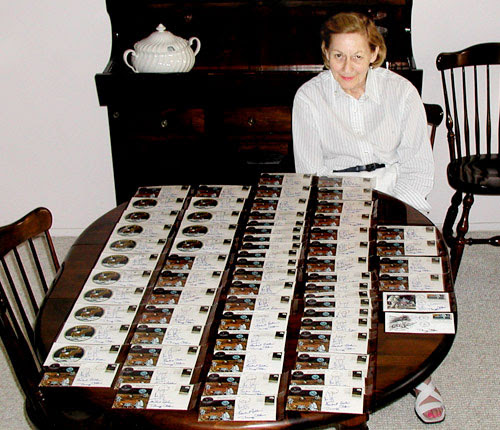
Apollo 11’s Safe Return and a Rare Legacy
As we now know, Apollo 11 was a triumphant success. Neil Armstrong became the first man to walk on the Moon. Buzz Aldrin joined him shortly after, while Michael Collins orbited above in the command module. All three returned safely, hailed as American heroes.
Video:
Apollo 11’s journey to the moon, annotated
Their families never needed to cash in on the insurance covers. But the envelopes remained tucked away in drawers, safes, and storage boxes. Over time, a few began to surface in auctions and private sales.
Today, these items are extremely rare and highly valuable. Depending on their condition, origin, and postmark, an authentic Apollo 11 insurance cover can fetch over $15,000 at auction. More than that, collectors view them as priceless relics symbols of ingenuity, humanity, and the deeply personal side of the space race.
Why These Envelopes Still Matter
In an age where space travel is being commercialized and even glamorized, it’s easy to forget how uncertain and dangerous those early missions truly were. The insurance covers offer a glimpse into the mindset of astronauts who understood the stakes and chose to act with quiet resolve.
They weren’t just preparing for greatness. They were preparing for everything.
These envelopes remind us that behind every historical mission are real people, real families, and real fears. The Apollo 11 insurance covers may have started as contingency plans, but today, they are enduring symbols of love, sacrifice, and the human spirit behind one of mankind’s greatest achievements.
